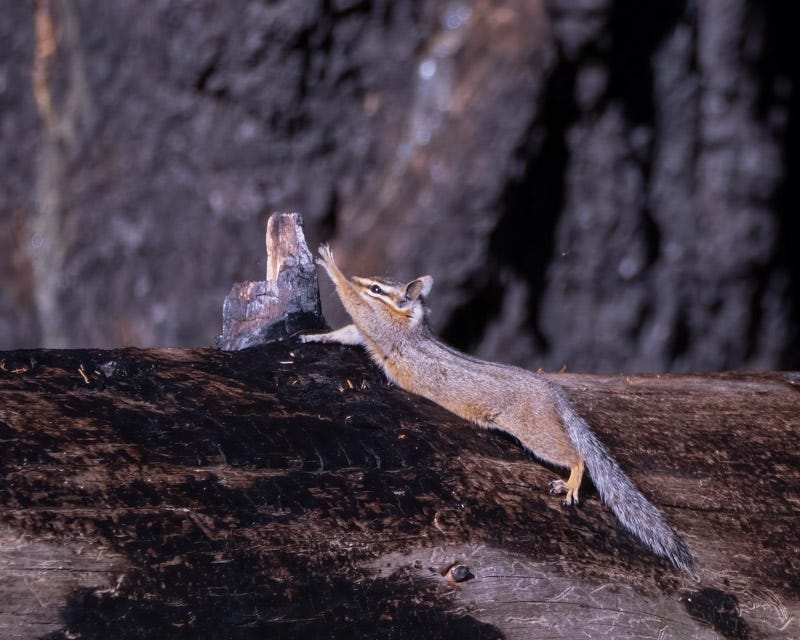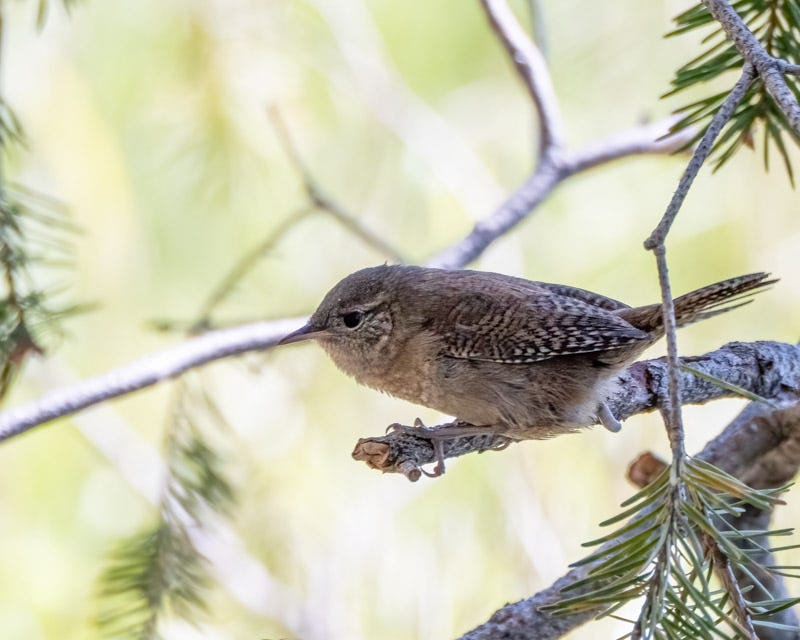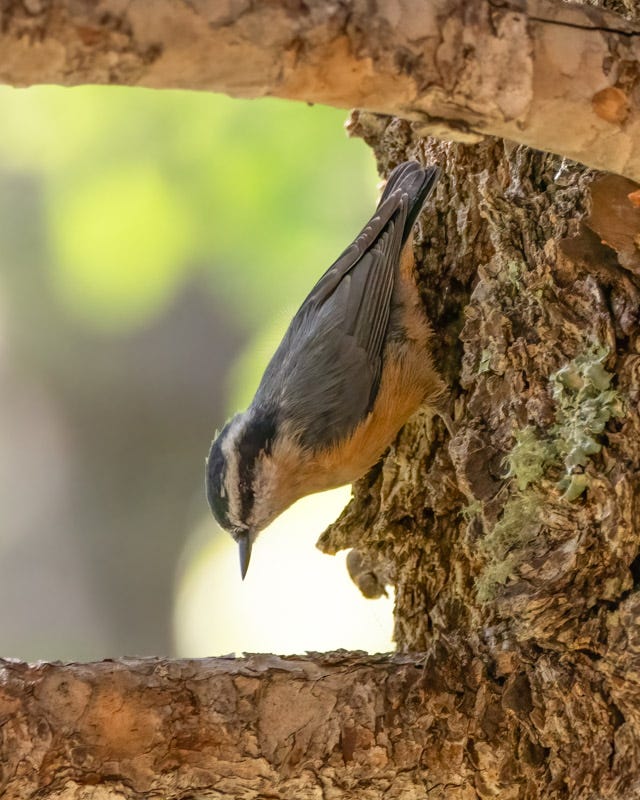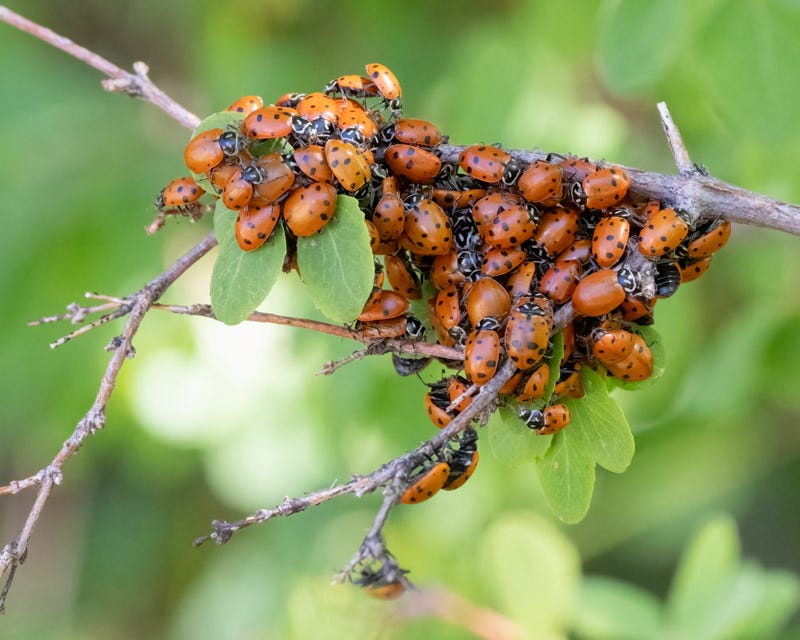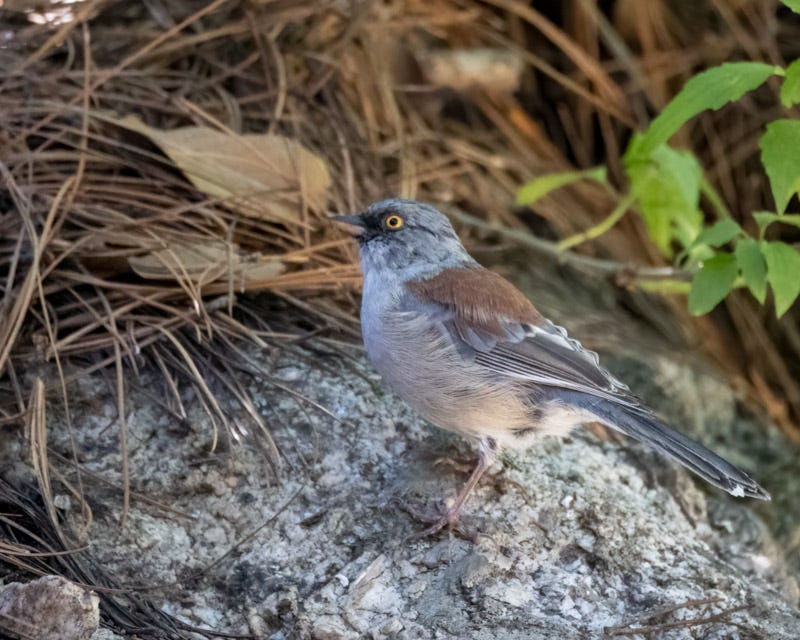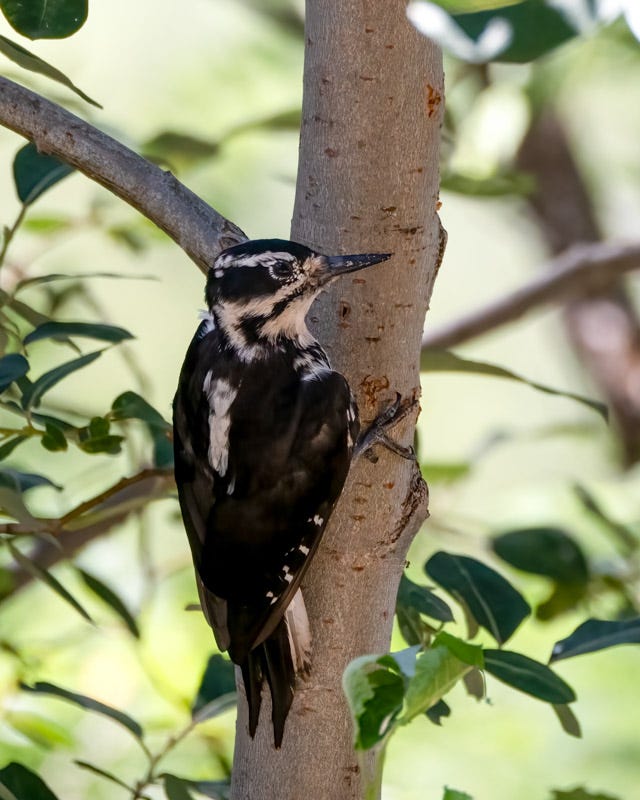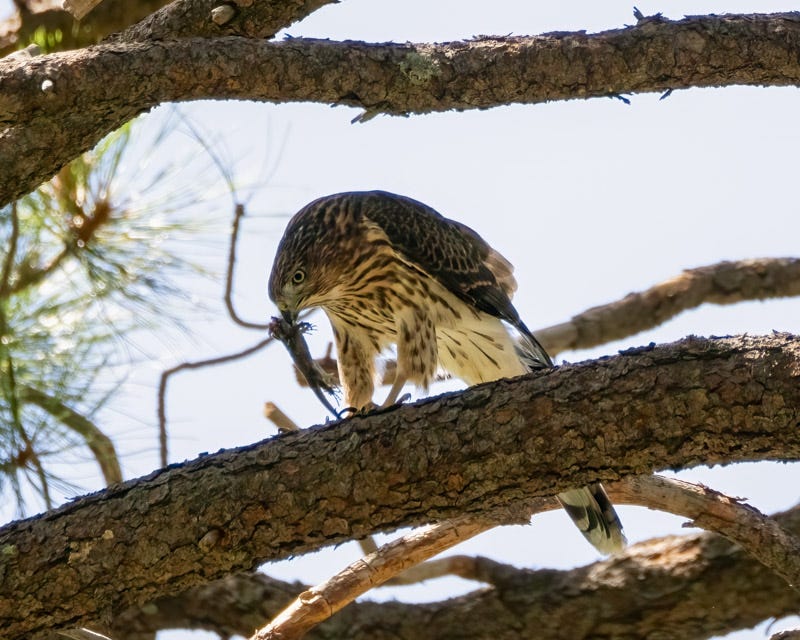A Visit to Mt. Lemmon
Sept. 18, 2024: Over a mile higher in elevation than at the desert floor
In the middle of August, I visited Mt.Lemmon with a few friends. It was nice to be out of the desert heat and smelling the cool pine air on the mountain. We did a short walk on the trail at the end of Observatory Road, about a mile past Ski Valley. There were some burned out trees there from past fires and Cliff Chipmunks were scurrying around.
Some people see the small Harris's Antelope Ground Squirrel in the Tucson valley and think they are chipmunks due to the stripe on their side. But Cliff Chipmunks have stripes on their faces and no white stripe on their side. The Antelope Squirrels we see in the desert don’t have stripes on their faces and have the white stripe on their sides. https://www.nps.gov/sagu/learn/nature/abert-squirrel.htm I'm not sure what this Cliff Chipmunk was doing- perhaps its morning exercises?
House Wrens are common throughout the United States. In our area, they spend summers in the mountains. House Wrens are almost half the size of our desert Cactus Wrens. You can hear their delightful sound at Birdnote: https://www.birdnote.org/podcasts/birdnote-daily/house-wren-little-brown-dynamo
Red-breasted Nuthatches have a white eyebrow and "apricot" underparts. They climb head-down tree trunks, probing for insects hidden under the bark. This Birdnote piece mentions that Red-breasted Nuthatches are on the list of "favorite backyard birds". They are backyard birds if you live in the woods, but not if you live in Tucson!! https://www.birdnote.org/podcasts/birdnote-daily/listening-nuthatches
One of my favorite things to search for on the mountain in August is the clusters of Ladybugs. Lady Bugs, or Lady Beetles, cluster in groups on mountain tops throughout the Southwest at this time of year. This species is known as the Convergent Lady Beetle, for the two white converging lines behind their heads.
Lady Beetles go into a type of dormancy at this time of year, called diapause. That gives us a chance to marvel at these special creatures before winter sets in. https://www.inaturalist.org/taxa/48987-Hippodamia-convergens
We left the area and went over to the cabin belonging to my friends Henry and Dorothy. Henry writes a very nice blog about the birds he sees on Mt. Lemmon. Here is a Yellow-eyed Junco in his yard. Henry’s story on Yellow-eyed Juncos is worth checking out: https://www.mtlemmonazimages.com/blog/fall-on-the-mountain-two-yellow-eyed-juncos-spar-over-water-rights-or-two-birds-fly-into-a-bar
A Hairy Woodpecker came to the feeders a few times. Hairy Woodpeckers have two white stripes on their head and a large white patch down the middle of their back. This is a female, as a male would sport a red cap on the back of its head.
Hairy Woodpeckers can be found throughout the United States. In Arizona, they live in mountain highlands. Woodpeckers have strong tail feathers and use them for extra support when they are working on a tree. You can see the Hairy Woodpecker using its tail propped against the branch for support.
Cooper's Hawks are common backyard birds in Tucson. If you have bird feeders, then you've seen a Cooper's Hawk crashing through your yard in pursuit of avian prey. Cooper's Hawks specialize in eating birds. Their short wings give them bursts of speed and their long tails act like a rudder guiding them through and around trees while chasing birds. But like many predators, these hawks can take advantage of other things that may be easy to catch. Here, a Cooper's Hawk was dining on a lizard it found.
Black-headed Grosbeaks are found in the mountains in Arizona and I've shared many photos of them this summer. It was neat to see a male and female Black-headed Grosbeak sharing the same branch. I've seen both in the same area before, but I can't recall seeing a pair side-by-side like this.
Besides the Cliff Chipmunks and the Abert's Squirrels in Henry's yard, a Rock Squirrel also enjoyed all of the spilled bird seed under the feeders.
Before heading back to Tucson, one of the last birds I saw on the mountain was this pretty Red-tailed Hawk. It was very lightly colored and it perched on top of this pine tree for the longest time. Due to the slope of the mountain, the tree-top perch was right at eye level for me. If you look closely, you can see that this hawk has a yellow iris. That lets us know this is a young Red-tailed Hawk. Its eye will darken as it ages and its tail will turn reddish.
It's always amazing to think that we live just one hour away from a totally different habitat than we have here in the desert valley. It is just one more thing that makes Tucson special.



